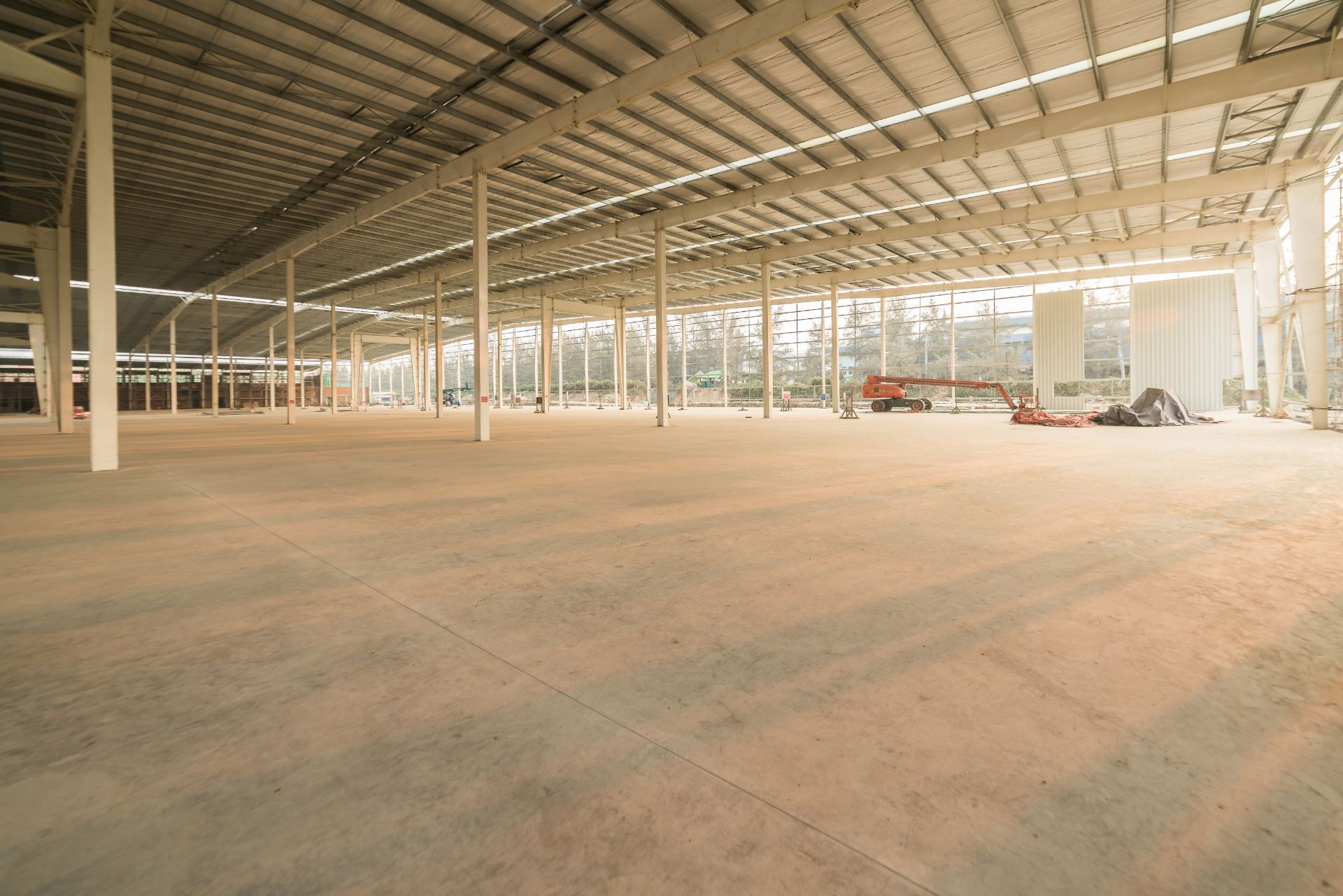Connecticut Warehouse Investment Property Insurance

or call us: (888) 585-5188

Top 3 Recommended Policies
Investing in warehouse properties in Connecticut offers promising opportunities, especially given the region’s growing commercial real estate market. However, securing the right insurance coverage for these properties is crucial to protect your investment against a range of risks. From rising premiums to emerging technologies in risk assessment, understanding the nuances of warehouse investment property insurance in Connecticut can help investors make informed decisions and safeguard their assets effectively.
Recent data shows a significant increase in insurance premiums in key Connecticut corridors, highlighting the evolving challenges property owners face. This article delves into the current insurance landscape, factors influencing premium changes, and strategies to optimize coverage for warehouse investments in the state.
For a detailed overview of the insurance premium trends in Connecticut’s commercial real estate sector, see the CT Post report on Bridgeport-Stamford insurance premiums.
Understanding the Insurance Landscape for Connecticut Warehouses
Connecticut’s commercial real estate market, including warehouses, has experienced notable growth, with a 10% increase in commercial real estate transactions from 2021 to 2022. This growth reflects rising demand for industrial and storage spaces, driven by shifts in supply chain logistics and e-commerce expansion. As online shopping continues to dominate consumer behavior, warehouses have become critical nodes in the distribution network, necessitating more sophisticated insurance solutions to protect these vital assets.
However, with growth comes increased exposure to risks, which insurers factor heavily into their pricing models. Warehouse properties, often large and housing valuable inventory, face unique challenges such as fire hazards, theft, and environmental risks. In Connecticut’s Bridgeport-Stamford corridor, commercial property and casualty insurance premiums surged by approximately 23% in 2024, placing the region among the highest in the nation for premium increases. This trend is not isolated; it reflects a broader national pattern where insurers are reevaluating risk in light of recent events and emerging trends.
This sharp rise is partly attributed to recent natural disasters, including significant flooding events in August 2024, which have heightened insurer concerns about property vulnerability. Investors must be aware that such environmental factors directly impact insurance costs and coverage terms. Additionally, the ongoing effects of climate change are prompting insurers to adopt more stringent underwriting criteria, leading to a reevaluation of risk assessments for warehouse properties. As a result, businesses may find themselves needing to invest in enhanced risk management strategies, including flood defenses and advanced security systems, to mitigate potential losses and secure more favorable insurance terms.
Key Risks Affecting Warehouse Insurance
Warehouses in Connecticut are vulnerable to several risks that influence insurance underwriting:
- Natural Disasters: Flooding, storms, and severe weather events have become more frequent, increasing the likelihood of property damage. Connecticut's coastal areas, in particular, face heightened risks due to rising sea levels and more intense storms.
- Property Use Changes: The rise of hybrid work models has altered how commercial spaces are utilized, sometimes complicating risk profiles. Warehouses may need to adapt to accommodate new operational workflows, which can introduce unforeseen liabilities.
- Crime and Theft: Warehouses often store valuable goods, making them targets for burglary and vandalism. The increase in e-commerce has led to a surge in demand for high-value inventory, which in turn raises the stakes for security measures.
- Fire and Equipment Damage: Industrial equipment and stored materials can pose fire risks, requiring specialized coverage. With the growing reliance on automation and advanced machinery, the potential for equipment malfunction and subsequent fire hazards is a significant concern.
Jennifer Spillane of Trepp highlights that insurers are adjusting premiums in response to these evolving risks, particularly emphasizing the impact of natural disasters and shifting property use trends on underwriting decisions. As warehouse operators seek to navigate this complex landscape, they must remain vigilant and proactive in addressing these risks, potentially seeking out tailored insurance products that align with their specific operational needs. Furthermore, engaging with risk management consultants can provide valuable insights into best practices for minimizing exposure and enhancing overall resilience in an increasingly unpredictable environment.

Why Accurate Property Valuation Matters in Insurance
One of the most critical factors in securing optimal insurance coverage for warehouse investments is accurate property valuation. According to the 2024 WTW report, proper asset valuation accounts for about 90% of all negotiations at policy renewal. This statistic underscores how insurers rely heavily on precise valuations to determine coverage limits and premium costs.
Overvaluing a property can lead to unnecessarily high premiums, while undervaluing risks leaving investors underinsured and exposed to significant financial loss in the event of a claim. Warehouse investors should engage professional appraisers familiar with industrial properties to ensure valuations reflect current market conditions and replacement costs. These appraisers not only consider the physical attributes of the warehouse but also analyze market trends, location desirability, and the economic climate, all of which can significantly impact a property's value.
Additionally, clear documentation of property features, safety measures, and maintenance practices can positively influence insurer assessments and potentially reduce premiums. For instance, a warehouse equipped with advanced fire suppression systems, robust security measures, and regular maintenance records can present a lower risk profile to insurers, thereby qualifying for discounts on premiums. Furthermore, maintaining an updated inventory of all assets within the warehouse can also play a crucial role in ensuring that the property is adequately covered in the event of a loss.
Leveraging Technology for Risk Assessment
Emerging technologies, such as machine learning and artificial intelligence, are beginning to transform how insurers assess property risks. A 2022 study explored using AI to automatically extract information from building blueprints, enhancing the accuracy and efficiency of risk evaluations. This innovative approach allows insurers to quickly analyze vast amounts of data, providing insights that were previously time-consuming and labor-intensive to obtain.
For warehouse investors, this means that insurers may increasingly use detailed digital models of properties to tailor coverage more precisely. This technology can help identify structural vulnerabilities or compliance issues that might otherwise be overlooked, leading to more accurate premium pricing and better risk management strategies. Moreover, the integration of IoT (Internet of Things) devices within warehouses can provide real-time data on environmental conditions, occupancy levels, and equipment performance, further informing insurers about potential risks. By harnessing these technological advancements, warehouse investors can not only secure better insurance terms but also enhance their overall operational efficiency and safety protocols.
Impact of Environmental Risks on Insurance Premiums
Environmental risks, particularly flooding and storms, have become a dominant factor influencing insurance premiums for Connecticut warehouse properties. The August 2024 flooding event in the Bridgeport-Stamford corridor led to a 23% increase in commercial property and casualty insurance premiums, reflecting heightened insurer caution in flood-prone areas.
Given Connecticut’s coastal location and susceptibility to severe weather, warehouse investors must consider flood risk mitigation strategies, such as elevating critical equipment, installing flood barriers, and ensuring proper drainage systems. These measures can not only protect assets but also demonstrate risk reduction efforts to insurers, potentially moderating premium increases.
Investors should also explore specialized flood insurance policies or endorsements that complement standard property coverage, ensuring comprehensive protection against water damage. Such policies often include provisions for business interruption, which can be crucial for maintaining cash flow during recovery periods following a disaster. Additionally, understanding the nuances of the National Flood Insurance Program (NFIP) can provide further insights into available coverage options and eligibility requirements, allowing investors to make informed decisions.
Moreover, the long-term implications of climate change are increasingly becoming a focal point for insurers. As weather patterns shift and the frequency of extreme weather events rises, insurers are reevaluating risk models and adjusting premiums accordingly. This trend underscores the importance of proactive risk management strategies, including regular assessments of property vulnerabilities and investing in sustainable practices that can enhance resilience. For further insights into how natural disasters are shaping insurance markets in Connecticut, Jennifer Spillane’s commentary at Trepp offers valuable expert analysis.
Trends in Connecticut’s Commercial Real Estate Market Affecting Insurance
Connecticut’s commercial real estate landscape is evolving rapidly, with a notable shift towards sustainable, adaptive, and flexible use of spaces. Michael Stoler, Managing Director at Madison Realty Capital, emphasizes this trend, highlighting how properties are being repurposed or retrofitted to meet modern demands. This evolution is not just a response to market pressures; it reflects a broader societal push towards environmental responsibility and efficiency. As businesses increasingly prioritize sustainability, the demand for green-certified buildings has surged, leading to innovative designs that incorporate energy-efficient systems and renewable materials.
This trend impacts warehouse insurance in several ways. Properties adapted for mixed-use or incorporating green building technologies may benefit from lower risk profiles, while those undergoing significant renovations might face temporary coverage challenges or require additional endorsements. Insurers are beginning to recognize the long-term benefits of insuring properties that adhere to sustainable practices, often resulting in reduced premiums for those who invest in energy-efficient upgrades. Furthermore, as more businesses adopt flexible work environments, the need for versatile spaces that can accommodate varying operational requirements is becoming paramount, further influencing insurance considerations.
Moreover, the growing market activity, evidenced by a 10% increase in commercial real estate deals, suggests heightened investor interest but also increased competition for insurance providers, which can influence premium pricing dynamics. This competitive landscape is prompting insurers to innovate their offerings, tailoring policies to meet the unique needs of diverse commercial properties. As a result, businesses are encouraged to engage in proactive risk management strategies, which not only enhance their insurability but also contribute to a more resilient real estate market overall.
Crime and Cybersecurity Considerations
Beyond physical risks, warehouses must also contend with crime-related exposures. A 2021 study developed an index-based insurance portfolio focusing on financial losses from property crimes and cybercrimes in the U.S., underscoring the growing importance of these threats. As technology advances, so too do the methods employed by criminals, making it essential for warehouse operators to stay ahead of potential vulnerabilities. This includes investing in state-of-the-art security systems, such as surveillance cameras and alarm systems, which not only deter criminal activity but can also lead to lower insurance premiums.
Warehouses storing valuable inventory are prime targets for theft and vandalism, while increasing reliance on digital systems for inventory management and security introduces cybersecurity risks. Insurers are increasingly factoring these elements into underwriting, making comprehensive crime and cyber insurance coverage essential for warehouse investors. Additionally, the rise of e-commerce has transformed the logistics landscape, with warehouses now serving as critical hubs for distribution. This shift necessitates a reevaluation of risk management strategies, as the potential for cyberattacks increases with the interconnectedness of supply chains. As such, warehouse operators must not only focus on physical security but also prioritize cybersecurity training for their staff, ensuring they are equipped to recognize and respond to potential threats effectively.

Strategies for Optimizing Warehouse Insurance Coverage
Given the complexity of risks and rising premiums, warehouse investors in Connecticut should adopt proactive strategies to optimize insurance coverage and costs:
- Regularly Review and Update Valuations: Ensure property valuations reflect current market conditions and replacement costs to avoid underinsurance or overpayment.
- Implement Risk Mitigation Measures: Invest in flood defenses, fire prevention systems, and security upgrades to reduce risk exposure.
- Leverage Technology: Utilize digital tools and AI-driven assessments to provide insurers with detailed property information.
- Work with Experienced Brokers: Engage insurance professionals who understand the Connecticut market and can negotiate favorable terms.
- Consider Specialized Coverage: Explore endorsements for flood, crime, and cyber risks tailored to warehouse operations.
By taking these steps, investors can better navigate the challenging insurance environment and protect their warehouse assets effectively. Additionally, it is crucial for warehouse owners to stay informed about the evolving landscape of insurance regulations and market trends. Regularly attending industry seminars and workshops can provide valuable insights into emerging risks and innovative insurance solutions. Networking with peers in the industry can also yield practical advice and shared experiences that may enhance risk management strategies.
Furthermore, warehouse operators should consider conducting comprehensive risk assessments periodically. These assessments can help identify vulnerabilities specific to their operations, such as the potential for equipment failure or supply chain disruptions. By understanding these risks in detail, investors can tailor their insurance coverage more precisely and ensure that they are not only compliant with legal requirements but also adequately protected against unforeseen events that could impact their bottom line.
Looking Ahead: The Future of Warehouse Insurance in Connecticut
As climate change continues to influence weather patterns and commercial real estate adapts to new economic realities, insurance for warehouse properties in Connecticut will likely remain dynamic. Investors should stay informed about market trends, regulatory changes, and technological advancements that impact risk profiles and insurance solutions.
Continued collaboration between insurers, property owners, and technology providers promises more sophisticated risk assessment tools and potentially more customized insurance products. Staying ahead of these developments will be key for warehouse investors seeking to balance protection with cost efficiency.
For a comprehensive understanding of the evolving property insurance market, the 2024 WTW report on insurance marketplace realities offers valuable insights into current challenges and opportunities.
Additionally, the rise of e-commerce has significantly impacted the demand for warehouse space, leading to a surge in new construction and retrofitting of existing facilities. This shift not only affects the physical attributes of warehouses but also introduces new risks that insurers must consider. For instance, warehouses that handle high volumes of goods may require specialized coverage for inventory loss, theft, and even cyber threats as they increasingly rely on technology for operations. Understanding these nuances will be crucial for investors as they navigate the complexities of insurance in this evolving landscape.
Moreover, the integration of artificial intelligence and big data analytics into risk assessment processes is transforming how insurers evaluate potential liabilities. By leveraging these technologies, insurers can provide more accurate pricing models and tailored coverage options that reflect the unique characteristics of each warehouse property. This evolution not only enhances the underwriting process but also empowers property owners to make informed decisions regarding their insurance needs. As these innovations continue to unfold, staying abreast of technological advancements will be essential for investors aiming to optimize their insurance strategies and ensure comprehensive protection for their assets.
In summary, Connecticut warehouse investment property insurance requires careful consideration of rising premiums, environmental risks, accurate valuations, and emerging technologies. By staying informed and adopting strategic approaches, investors can secure robust coverage that supports long-term success in this vibrant market.
Contact Us
Phone
Locations
Connecticut Location
703 Hebron Ave., 3rd Floor, Glastonbury, CT 06033
North Carolina Location
436 East 36th St., Charlotte, NC 28205

